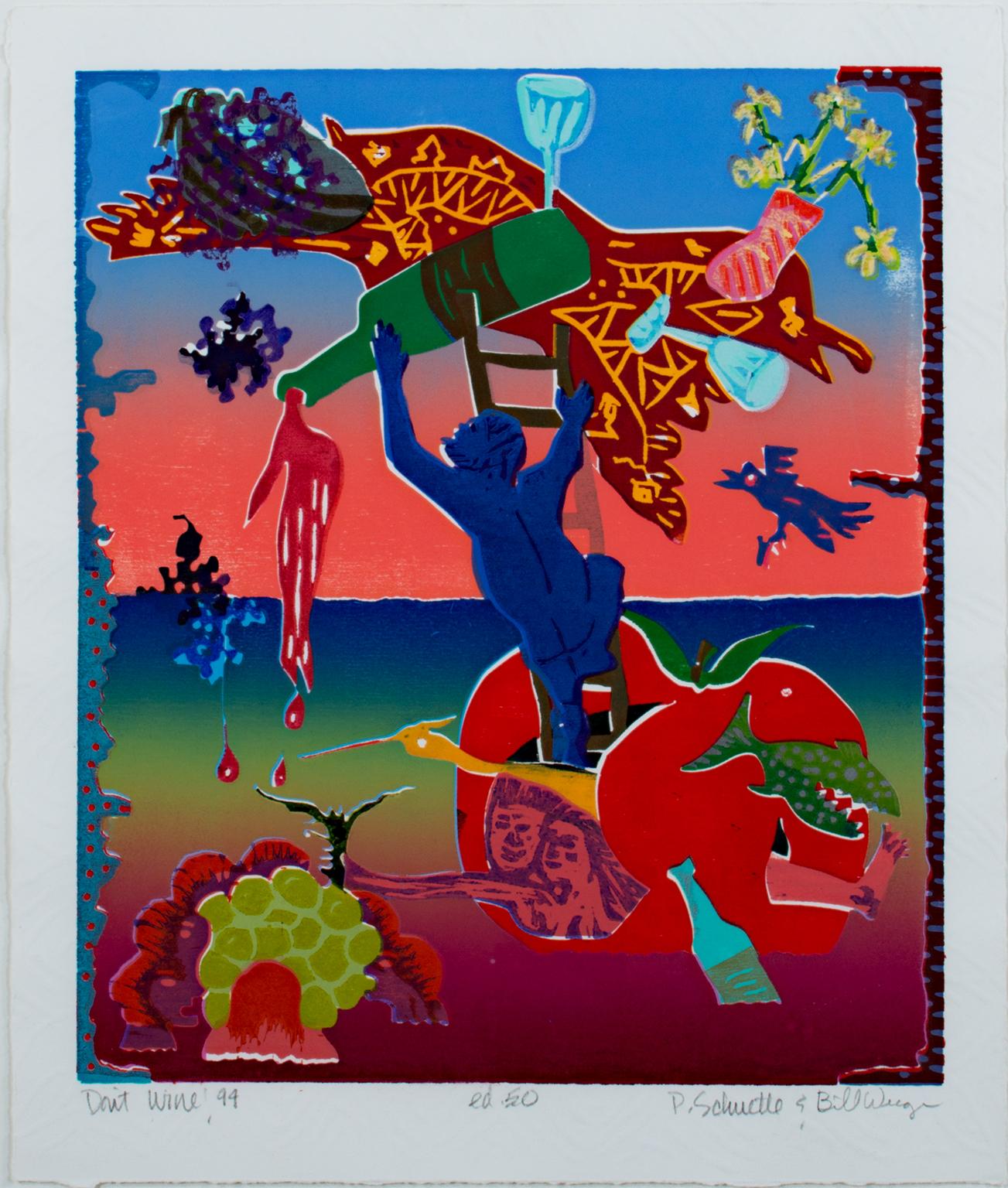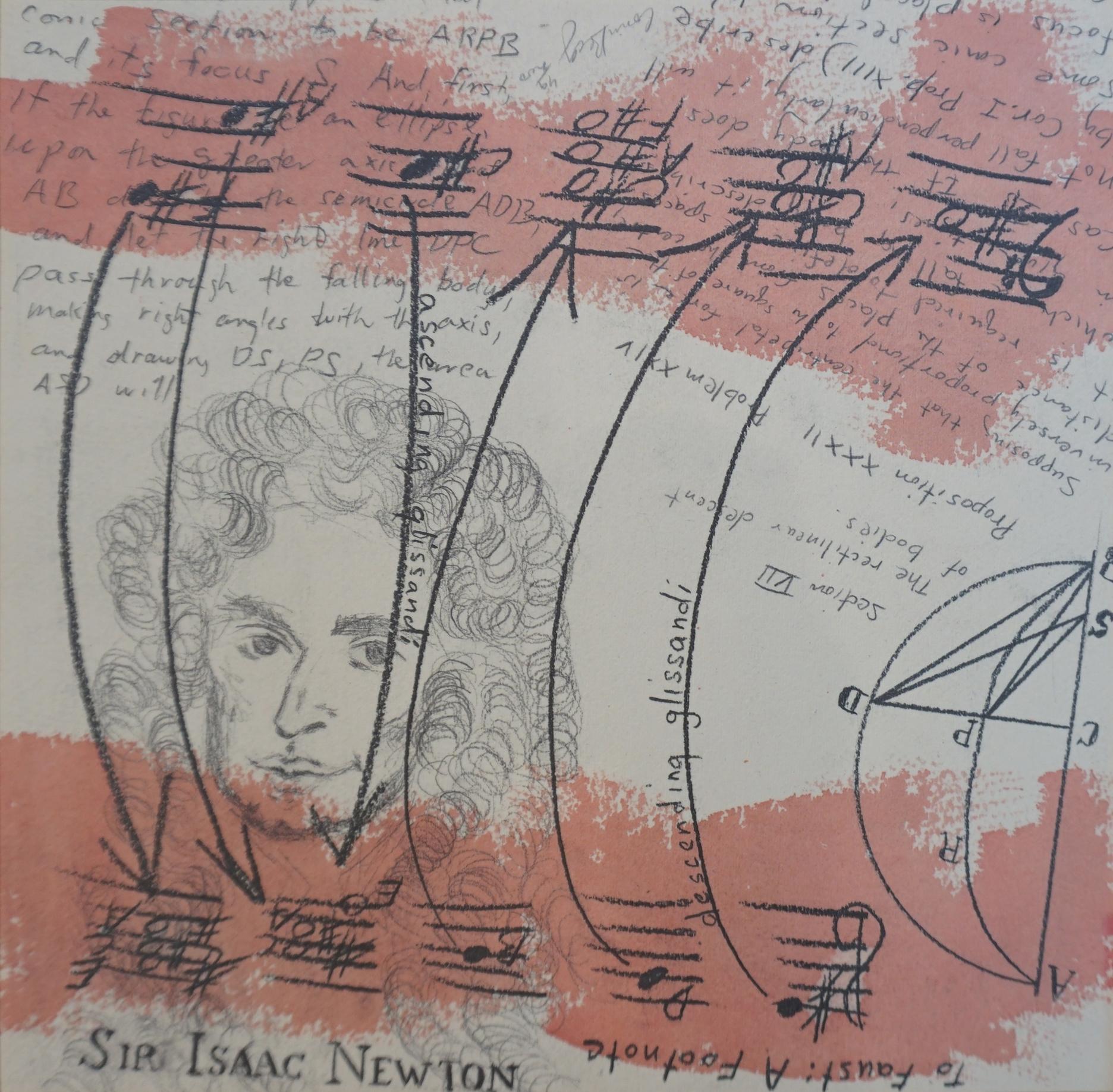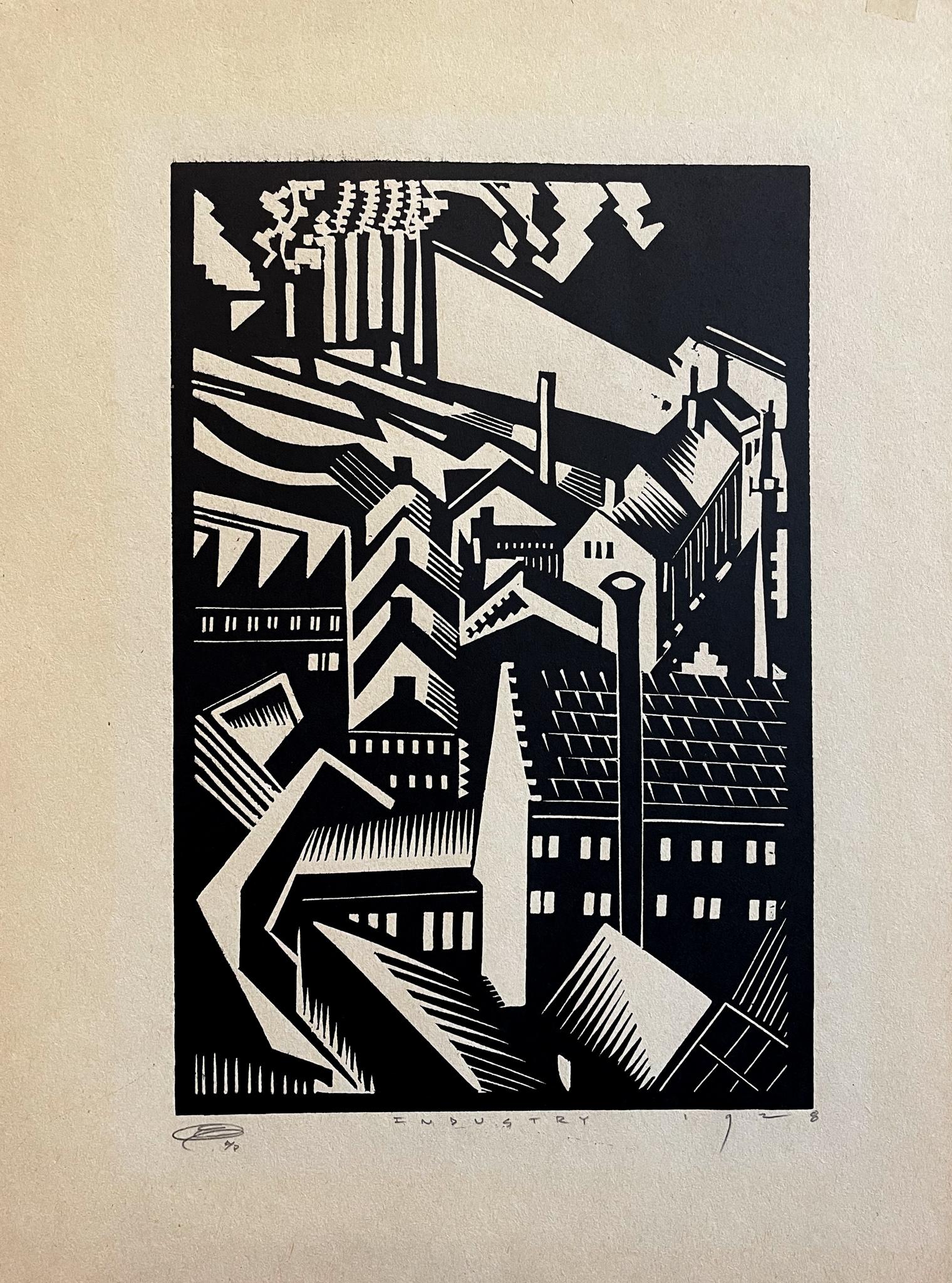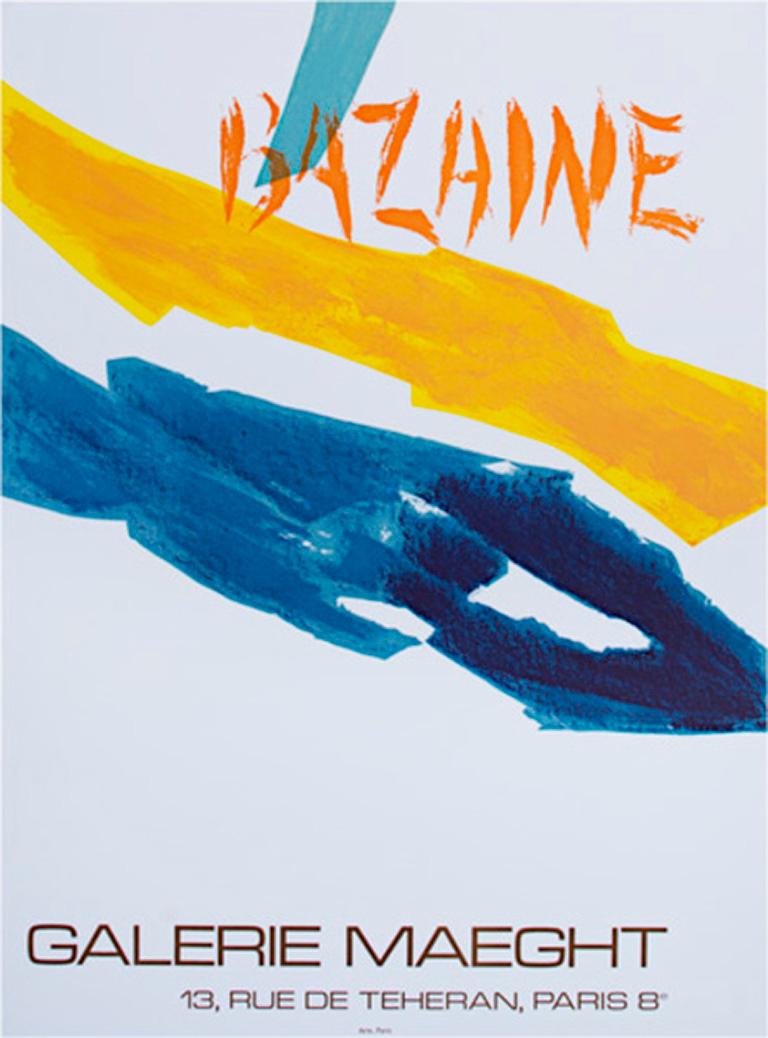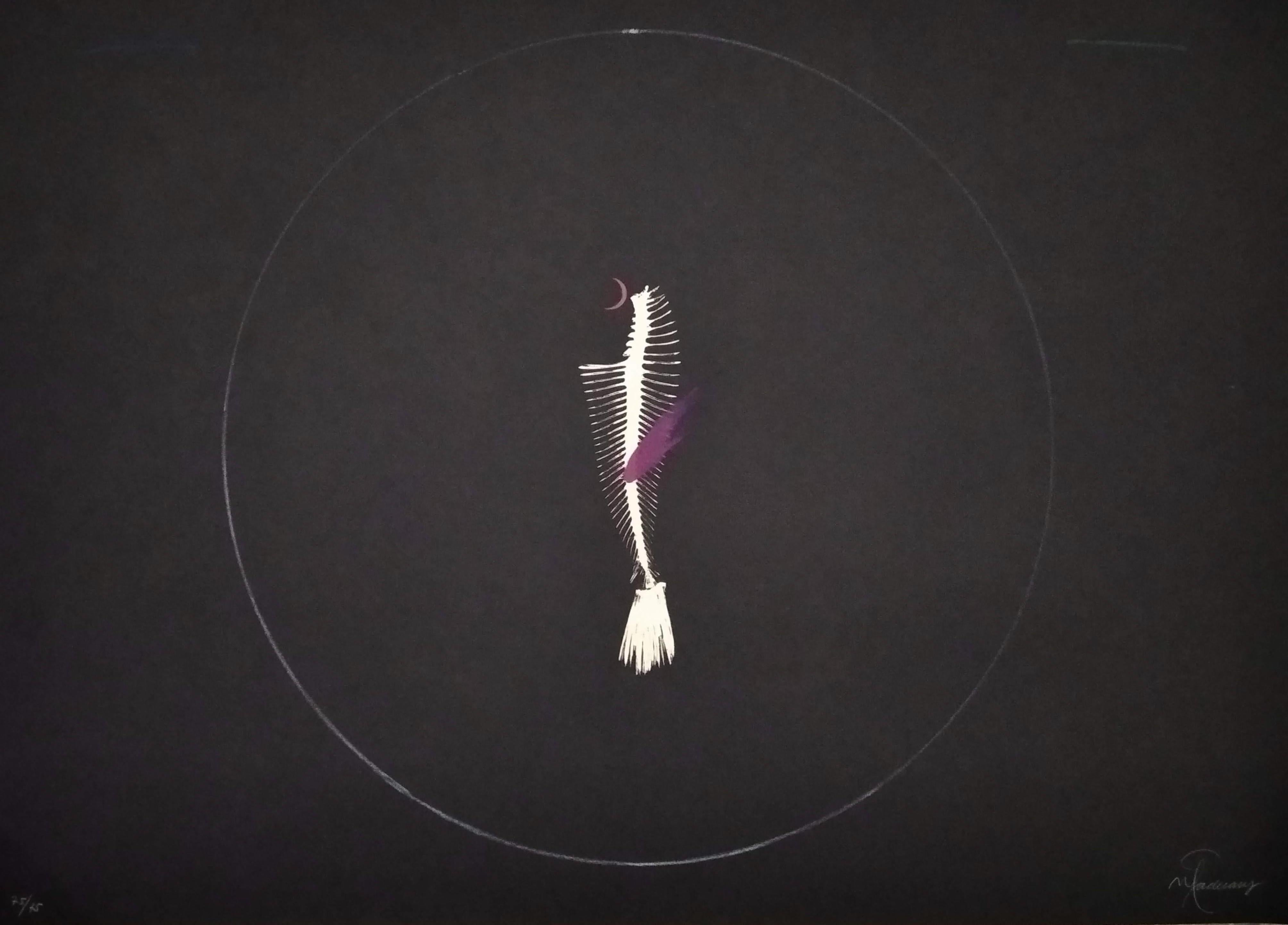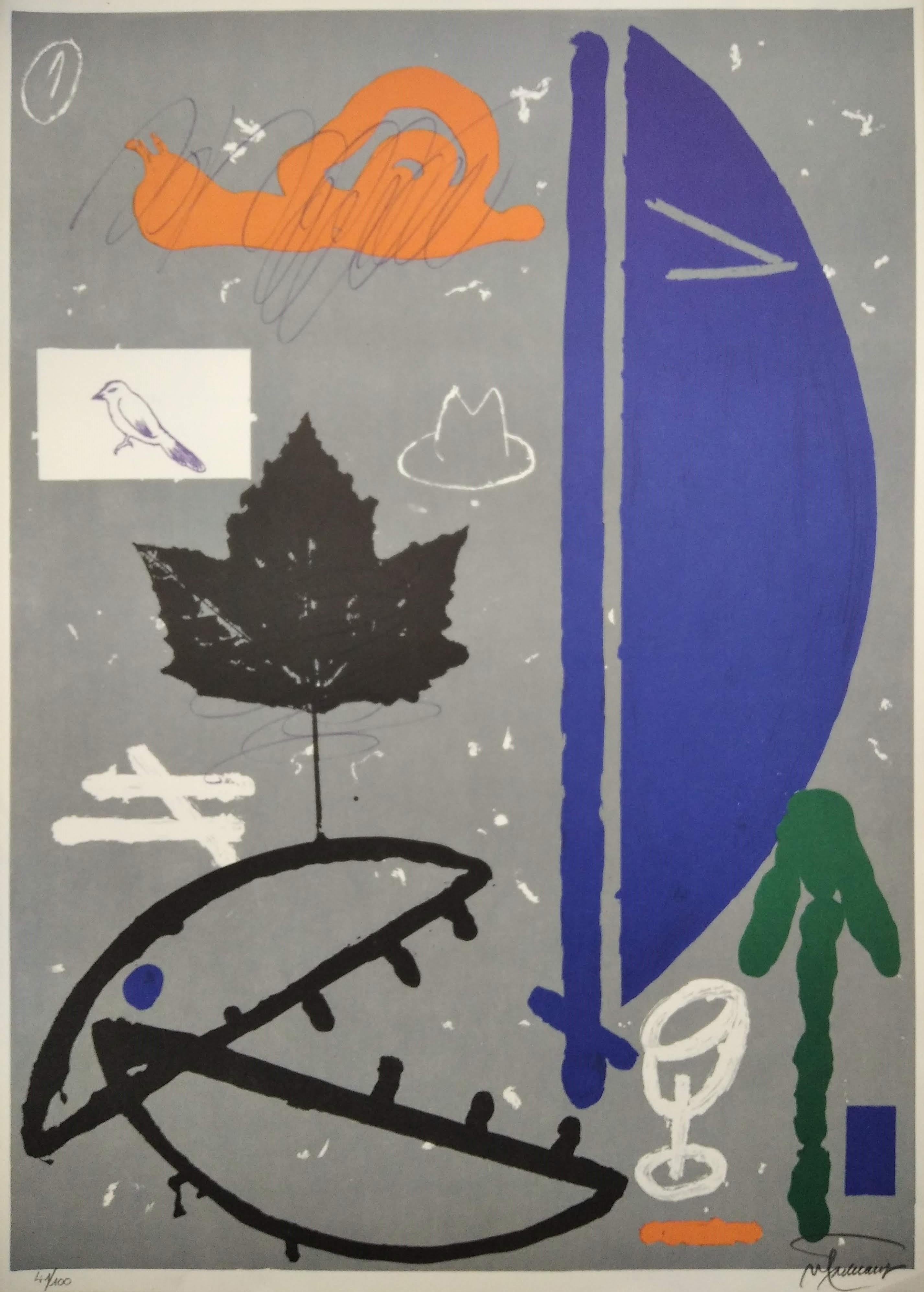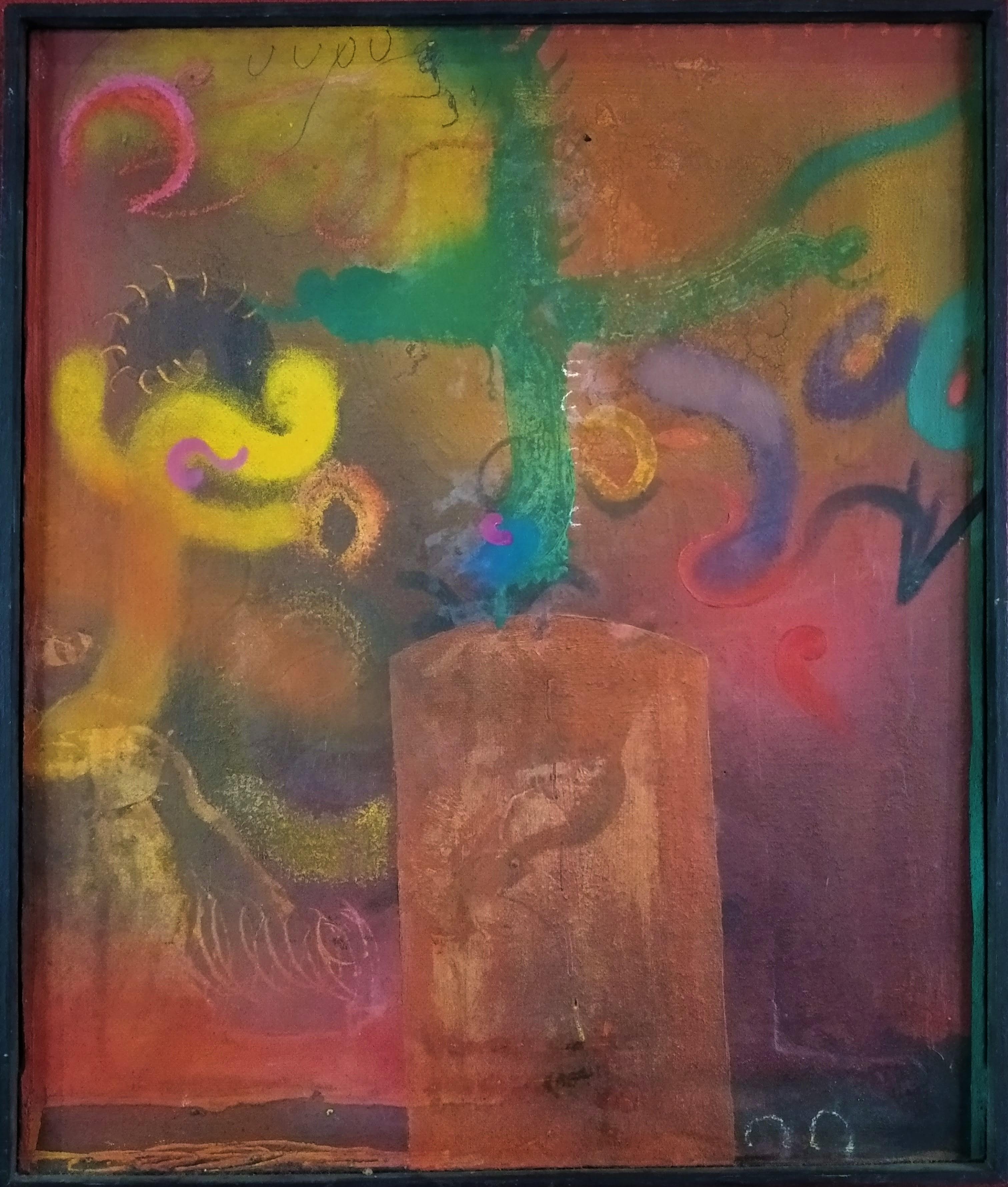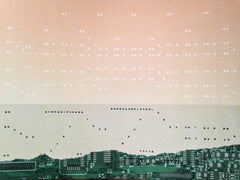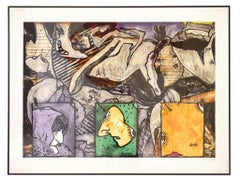
UNTITLED 1988
View Similar Items
1 of 3
Jasper JohnsUNTITLED 19881988
1988
About the Item
- Creator:Jasper Johns (1930, American)
- Creation Year:1988
- Dimensions:Height: 35 in (88.9 cm)Width: 47 in (119.38 cm)
- Medium:
- Movement & Style:
- Period:
- Condition:
- Gallery Location:Miami Beach, FL
- Reference Number:1stDibs: LU84832612791
You May Also Like
- Jo Yarrington, Orchestration 2016, Paper, Inkjet Prints, A/P, Ed of 30By Jo YarringtonLocated in Darien, CTThe installation, Orchestrations, explores the vernacular in vintage piano roles. As a response to the exhibition’s name and focus, Heliotrope, the physical perforations in the piano...Category
21st Century and Contemporary Post-Modern Abstract Prints
MaterialsPaper, Inkjet
- "Don't Wine, " Original Surreal Serigraph by Paula Schuette Kraemer & Bill WeegeBy Paula Schuette KraemerLocated in Milwaukee, WI"Don't Wine" is a mixed media piece, predominately a serigraph, by Paula Schuette Kramer and Bill Weege. Both artists signed in pencil in the lower right, and the title is in the lower left. It is one of a an edition of 50. The print is an explosion of bright colors, but red, blue, and green dominated the composition as they fade through the background. A blue figure climbs up a ladder out of an apple, hefting a large wine bottle overhead, which they pour out into the sea of wine. A man, woman, and long-necked orange bird also look out from the apple, reading for the stem of a floating bunch of green grapes. A group surrounds the grapes with their heads and shoulders above the water, eating the fruit. Birds fly through the background, dodging wine glasses and a vase of flowers that seem to be tumbling from a flying carpet. The entire image feels very surreal. Art size: 12" x 10" Frame size: 19 1/4" x 17" Paula Schuette Kraemer is an independent artist living in Madison, Wisconsin...Category
1990s Post-Modern Abstract Prints
MaterialsMixed Media
- "Butter Bug, " Original Etching by Nicolee TeegardenLocated in Milwaukee, WI"Butter Bug" is an original etching by Nicolee Teegarden. This piece features abstract, biomorphic swirls in black and white. 9" x 5" art 17" x 14" frame Taught art at Tremper Hig...Category
1970s Post-Modern Abstract Prints
MaterialsEtching
- UNTITLED (from the ARTSOUNDS Collection)Located in New York, NYFits in a standard album frame. CONNIE BECKLEY Untitled (from the Artsounds Collection), 1986 color offset print, ed. 200 12 x 12 cm. 30.5 x 30.5 cm. Edition 49/100 signed and num...Category
1980s Post-Modern Portrait Prints
MaterialsOffset
- IndustryBy Earl Marshawn WashingtonLocated in New York, NYIndustry, 1928, by Earl Marshawn Washington (b. 1962) Woodcut relief on paper 12 x 9 inches unframed (30.48 x 22.68 cm) Signed on bottom left Inscribed (Industry) on bottom center Da...Category
Early 20th Century Post-Modern Landscape Prints
MaterialsInk
- “Shore Sentry”By Syd SolomonLocated in Southampton, NYShore Sentry, is an original color, limited edition lithograph on handmade German black etching paper; printed by Topaz Editions in 1977. Artist proofs 10. Edition size 100. Provenance:: A Sarasota, Florida collector Signed: Artist signed lower left with edition size Image size: 22 by 30 inches Sheet size: 30 by 38 inches Edition 38/100 Condition: Excellent Overall framed size: 30.25 by 38.25 inches Framed under plexiglass in chrome colored metal gallery frame SYD SOLOMON BIOGRAPHY Written by Dr. Lisa Peters/Berry Campbell Gallery “Here, in simple English, is what Syd Solomon does: He meditates. He connects his hand and paintbrush to the deeper, quieter, more mysterious parts of his mind- and he paints pictures of what he sees and feels down there.” --Kurt Vonnegut Jr. from Palm Sunday, 1981 Syd Solomon was born near Uniontown, Pennsylvania, in 1917. He began painting in high school in Wilkes-Barre, where he was also a star football player. After high school, he worked in advertising and took classes at the Art Institute of Chicago. Before the attack on Pearl Harbor, he joined the war effort and was assigned to the First Camouflage Battalion, the 924th Engineer Aviation Regiment of the US Army. He used his artistic skills to create camouflage instruction manuals utilized throughout the Army. He married Ann Francine Cohen in late 1941. Soon thereafter, in early 1942, the couple moved to Fort Ord in California where he was sent to camouflage the coast to protect it from possible aerial bombings. Sent overseas in 1943, Solomon did aerial reconnaissance over Holland. Solomon was sent to Normandy early in the invasion where his camouflage designs provided protective concealment for the transport of supplies for men who had broken through the enemy line. Solomon was considered one of the best camoufleurs in the Army, receiving among other commendations, five bronze stars. Solomon often remarked that his camouflage experience during World War II influenced his ideas about abstract art. At the end of the War, he attended the École des Beaux-Arts in Paris. Because Solomon suffered frostbite during the Battle of the Bulge, he could not live in cold climates, so he and Annie chose to settle in Sarasota, Florida, after the War. Sarasota was home to the John and Mable Ringling Museum of Art, and soon Solomon became friends with Arthur Everett “Chick” Austin, Jr., the museum’s first Director. In the late 1940s, Solomon experimented with new synthetic media, the precursors to acrylic paints provided to him by chemist Guy Pascal, who was developing them. Victor D’Amico, the first Director of Education for the Museum of Modern Art, recognized Solomon as the first artist to use acrylic paint. His early experimentation with this medium as well as other media put him at the forefront of technical innovations in his generation. He was also one of the first artists to use aerosol sprays and combined them with resists, an innovation influenced by his camouflage experience. Solomon’s work began to be acknowledged nationally in 1952. He was included in American Watercolors, Drawings and Prints at the Metropolitan Museum of Art, New York. From 1952–1962, Solomon’s work was discovered by the cognoscenti of the art world, including the Museum of Modern Art Curators, Dorothy C. Miller and Peter Selz, and the Whitney Museum of American Art’s Director, John I. H. Baur. He had his first solo show in New York at the Associated American Artists Gallery in 1955 with “Chick” Austin, Jr. writing the essay for the exhibition. In the summer of 1955, the Solomons visited East Hampton, New York, for the first time at the invitation of fellow artist David Budd. There, Solomon met and befriended many of the artists of the New York School, including Jackson Pollock, Franz Kline, Willem de Kooning, James Brooks, Alfonso Ossorio, and Conrad Marca-Relli. By 1959, and for the next thirty-five years, the Solomons split the year between Sarasota (in the winter and spring) and the Hamptons (in the summer and fall). In 1959, Solomon began showing regularly in New York City at the Saidenberg Gallery with collector Joseph Hirshhorn buying three paintings from Solomon’s first show. At the same time, his works entered the collections of the Whitney Museum of American Art, the Solomon R. Guggenheim Museum, and the Wadsworth Athenaeum in Hartford, Connecticut, among others. Solomon also began showing at Signa Gallery in East Hampton and at the James David Gallery in Miami run by the renowned art dealer, Dorothy Blau. In 1961, the Guggenheim Museum’s H. H. Arnason bestowed to him the Silvermine Award at the 13th New England Annual. Additionally, Thomas Hess of ARTnews magazine chose Solomon as one of the ten outstanding painters of the year. At the suggestion of Alfred H. Barr, Jr., the Museum of Modern Art’s Director, the John and Mable Ringling Museum in Sarasota began its contemporary collection by purchasing Solomon’s painting, Silent World, 1961. Solomon became influential in the Hamptons and in Florida during the 1960s. In late 1964, he created the Institute of Fine Art at the New College in Sarasota. He is credited with bringing many nationally known artists to Florida to teach, including Larry Rivers, Philip Guston, James Brooks, and Conrad Marca-Relli. Later Jimmy Ernst, John Chamberlain, James Rosenquist, and Robert Rauschenberg settled near Solomon in Florida. In East Hampton, the Solomon home was the epicenter of artists and writers who spent time in the Hamptons, including Alfred Leslie, Jim Dine, Ibram Lassaw, Saul Bellow...Category
1970s Post-Modern Abstract Prints
MaterialsHandmade Paper, Lithograph

